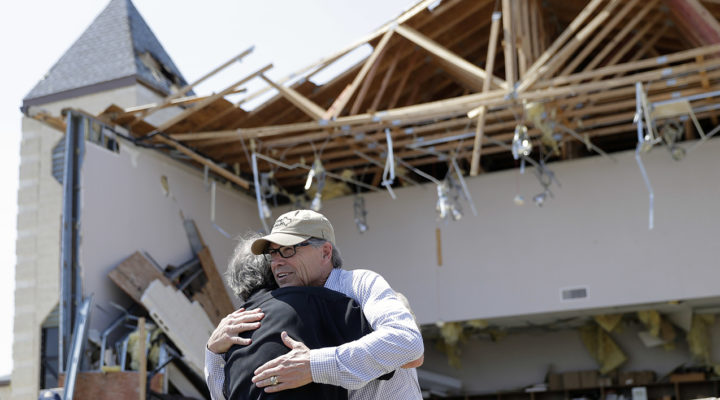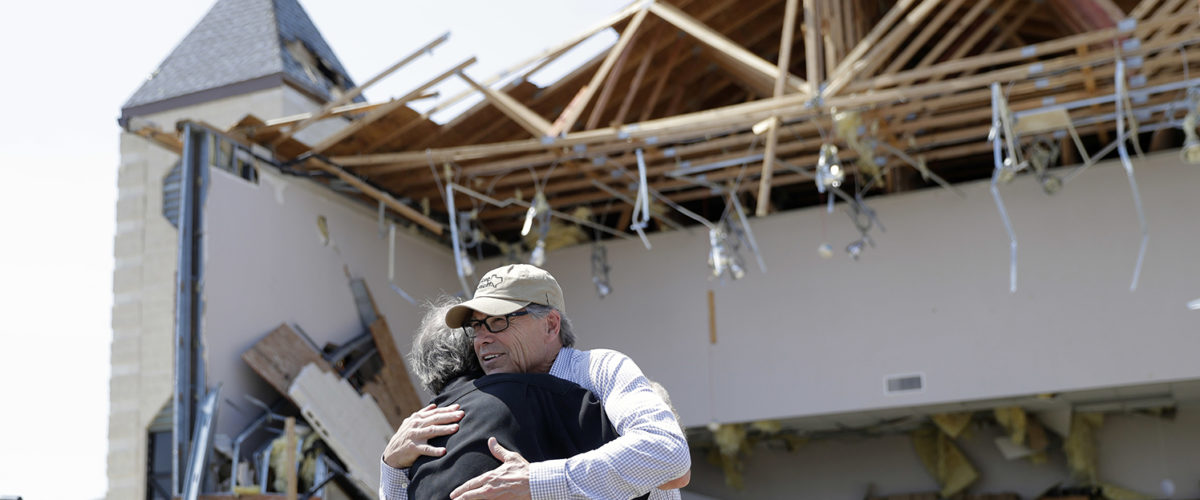A recent ABC News headline may have been a shocker to Americans who haven’t lived through a hurricane.
“Hurricane Harvey recovery will be ‘multi-year project,’ Texas governor says.”
Multi-year?
That’s a fact many religious organizations know all too well. In fact, it’s their specialty.
Groups like the Cooperative Baptist Fellowship, United Methodist Committee on Relief, Episcopal Development and Response and the Church of Jesus Christ of Latter-day Saints’ Emergency Response and are just a few that were planning long-term recovery efforts before Harvey even made landfall.
Of course, there are faith-based groups that, with government approval, operate in the midst of catastrophe itself, providing immediate shelter, food and sometimes rescue services.
That’s known as disaster relief.
Most others focus on disaster response, which is concerned with projects like home and school repair, demolition of ruined structures, and providing housing and spiritual care. Those efforts can last weeks, months and even years — as they did for tornado victims in Oklahoma, for the residents of West, Texas, and for those of Hurricane Sandy.
CBF disaster response officials have been methodically gathering information in order to prepare volunteer teams for assignments wherever Harvey wreaked havoc.
“That means getting everything ready for the recovery phase of this work,” said Rick McClatchy, field coordinator of CBF Texas.
“CBF Texas is not a first-responder,” he said. “We come in a few weeks after a disaster … when people start to come back to their homes and communities and help them put their lives together again.”
CBF Texas and national recovery officials are setting up teams to coordinate the placement of volunteers and church groups that will be descending on the region in coming weeks and months.
And disaster response groups aren’t alone to alerting people about that.
“While the winds and rains from Hurricane Harvey have finally begun to taper off for residents along the Texas and Louisiana coastlines, the cleanup effort will likely be measured in months and years — not days and weeks,” GuideStone Financial Resources said in an email offering tips on how churches can financially recover from Harvey.
First, churches that sustained damage should contact their insurance companies as soon as possible, even if the full extent of the damage is unknown. Steps also should be taken to prevent further damage, if possible.
A thorough property review should be conducted.
“Some churches, especially those dealing with so many pressing needs, delegate this task and don’t give it the attention it deserves,” Gaelen Cole, senior manager of risk and compliance for GuideStone, said in the statement. “It’s important that this be done thoroughly, by a professional whenever possible.”
Providing proof of loss is key, Cole added. Most insurance companies expect proof of loss within 60 days of their request for it.
It’s a good idea to get started on that assessment given that churches have so much account for, including digital equipment, furniture, classroom and office furnishings and more.
And there are other financial challenges.
“We have seen evidence that most churches are able to maintain their giving during the weeks after a disaster, but churches must consider the expense of renting temporary quarters while they rebuild,” Cole said.
Then there is the psychological aftermath of Harvey that must be considered long term, the Bayor College of Medicine warned in a Thursday news release.
People with pre-existing mental health disorders need special care in case their conditions worsened during and after the hurricane and flooding, Asim Shah, professor and executive vice chair for community psychiatry, said in the release.
Shah said that is a likely outcome.
Another group to look out for are those who had no pre-existing mental health conditions but developed them during and after the disaster. This can be especially true for children.
“It is common for those who have gone through a traumatic experience like Harvey to suffer from anxiety, depression, stress, fear and insecurity,” Shah said. “These feelings can last for months and develop into post-traumatic stress disorder.”



